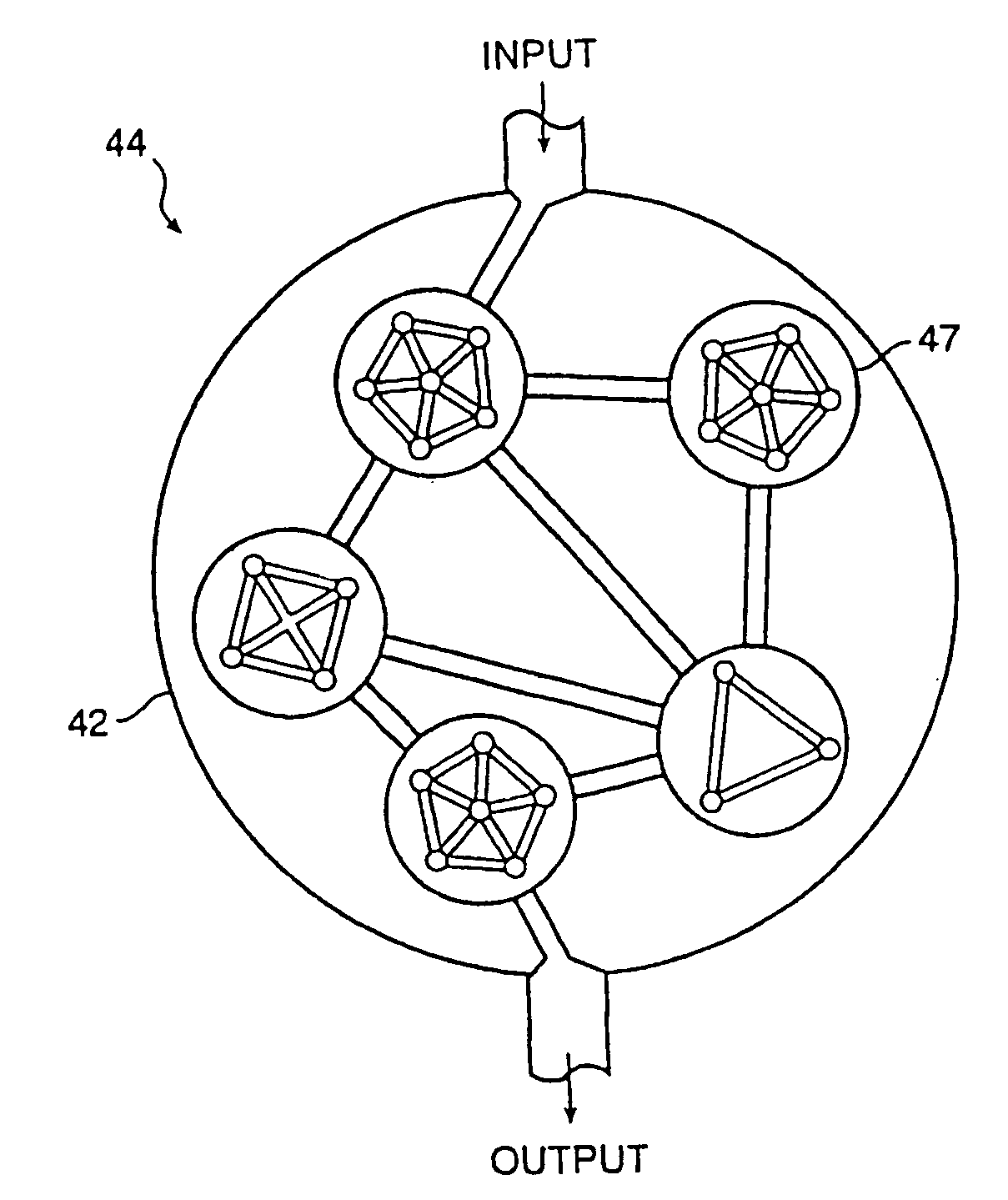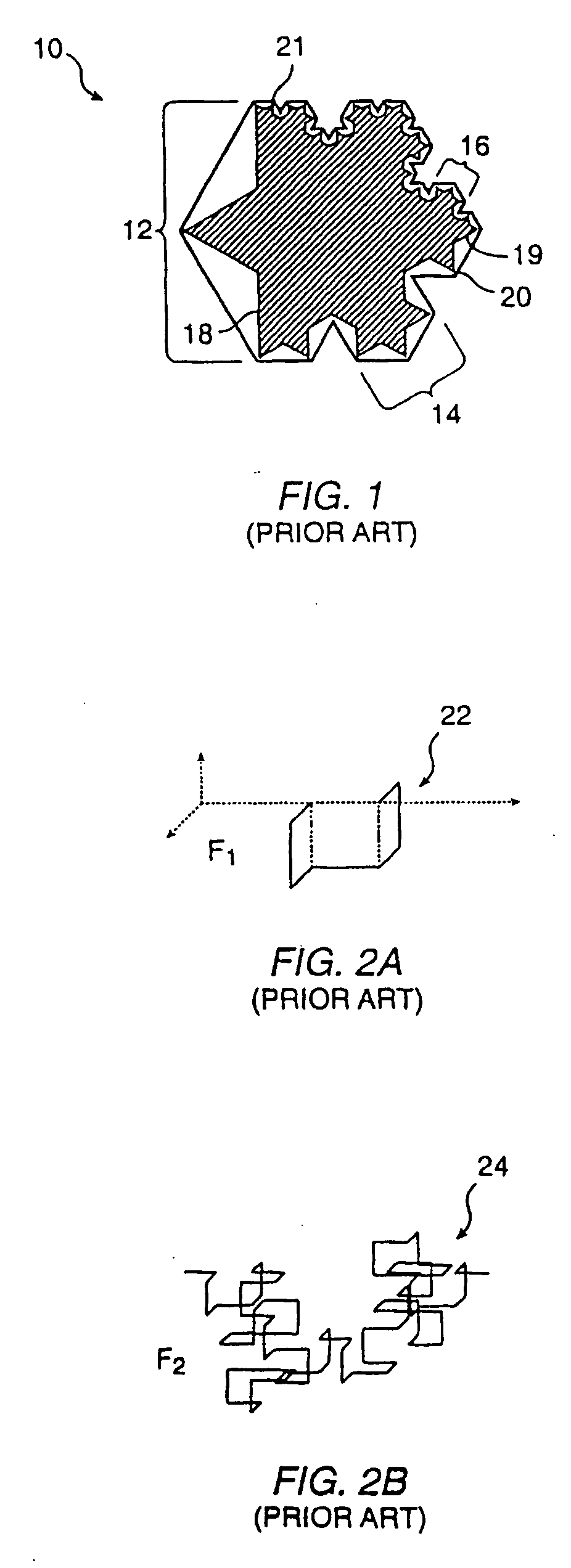Method and apparatus for describing and simulating complex systems
a complex system and system technology, applied in the field of symbolic representation of data, can solve the problems of inapplicability to models other than simple bacterial cells, inability to describe or suggest how cells might interact in multicellular organisms, and inability to analyze certain non-equilibrium processes with sufficient mathematical clarity with current mathematical tools
- Summary
- Abstract
- Description
- Claims
- Application Information
AI Technical Summary
Benefits of technology
Problems solved by technology
Method used
Image
Examples
Embodiment Construction
[0027] In order to understand the invention, it is useful to define the underlying elements. Referring to FIG. 1, there is illustrated a graphical representation of a typical multiscale spatial static dataset 10 as might be derived by applying pattern recognition techniques to geological data. It illustrates three scale levels 12, 14, 16 in the indexing of the tree. Each scale level has three branching event frequencies. (At each increase in scale, to each source line 18, 19 is added a corresponding triangle 20, 21 resulting from events at the third harmonic of the source line.) This dataset 10 is a multiscale fractal, meaning that the fractalization process is not applied homogeneously at each scale. For the purposes of explanation, the pattern shown is totally regular, each level is of the same exponential. An example of an irregular pattern would be the boundary of a seacoast viewed at different scales. However, each level would be covered by a range of exponentials. The dataset ...
PUM
 Login to View More
Login to View More Abstract
Description
Claims
Application Information
 Login to View More
Login to View More - R&D
- Intellectual Property
- Life Sciences
- Materials
- Tech Scout
- Unparalleled Data Quality
- Higher Quality Content
- 60% Fewer Hallucinations
Browse by: Latest US Patents, China's latest patents, Technical Efficacy Thesaurus, Application Domain, Technology Topic, Popular Technical Reports.
© 2025 PatSnap. All rights reserved.Legal|Privacy policy|Modern Slavery Act Transparency Statement|Sitemap|About US| Contact US: help@patsnap.com



